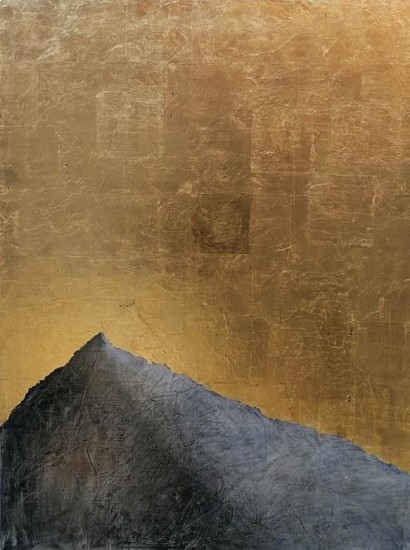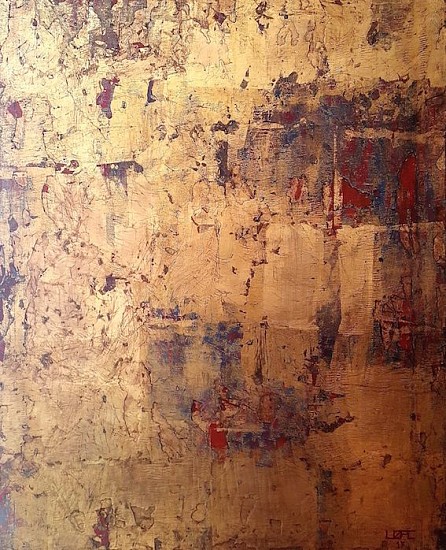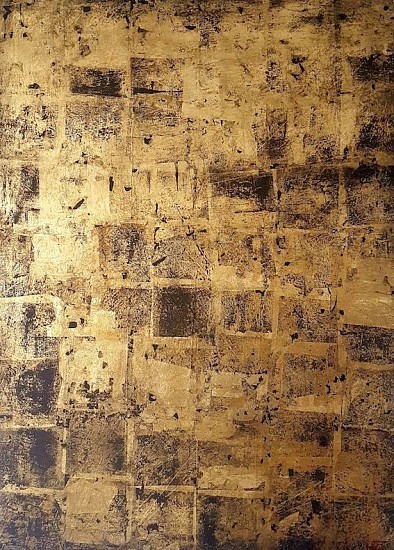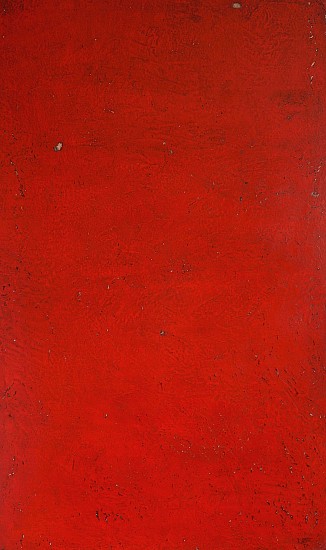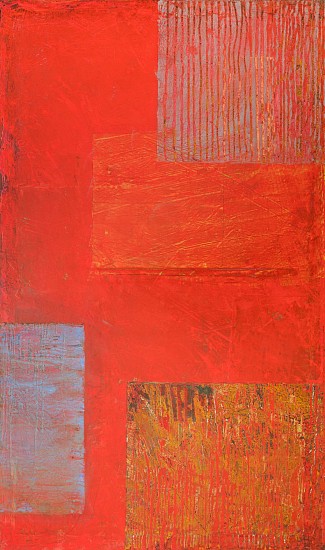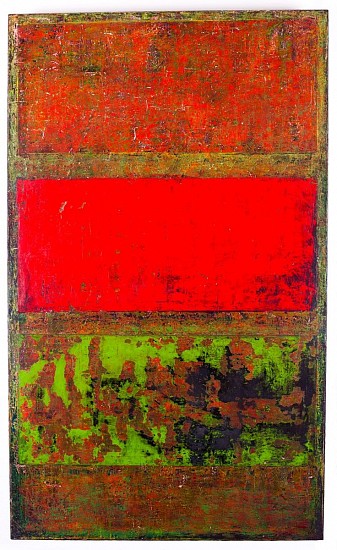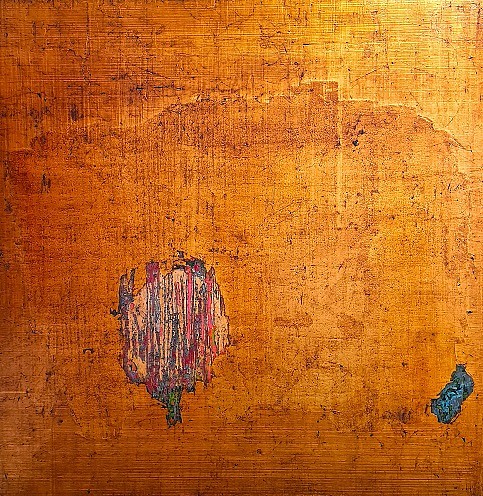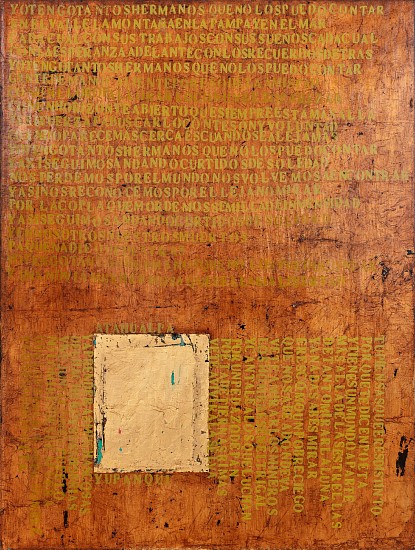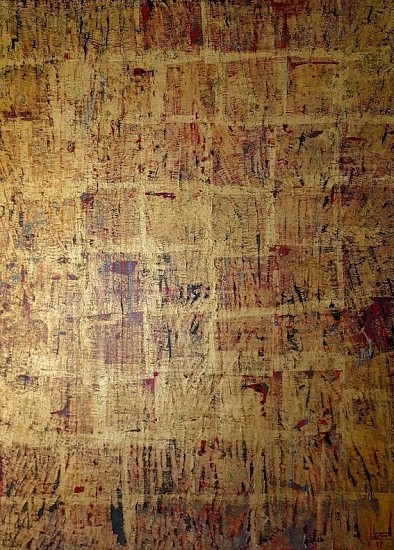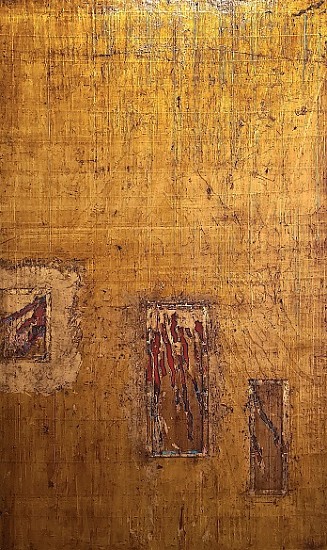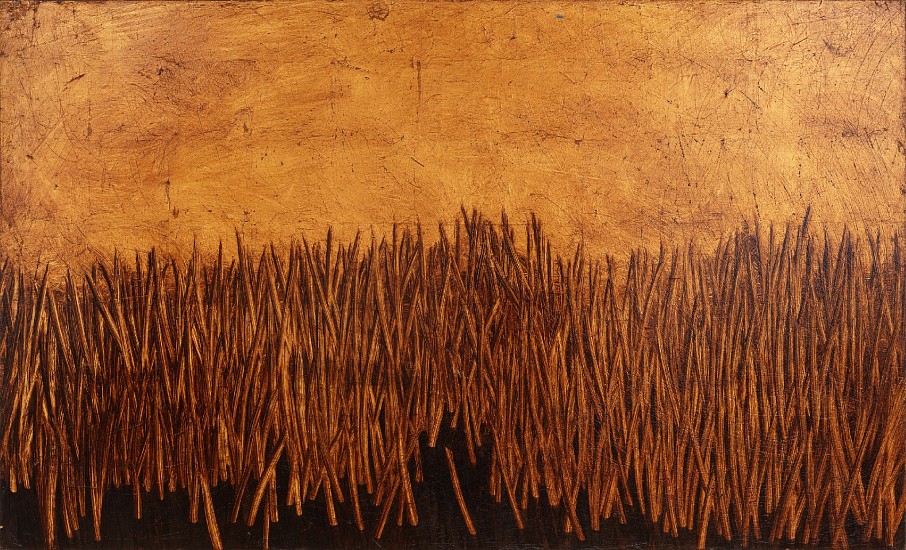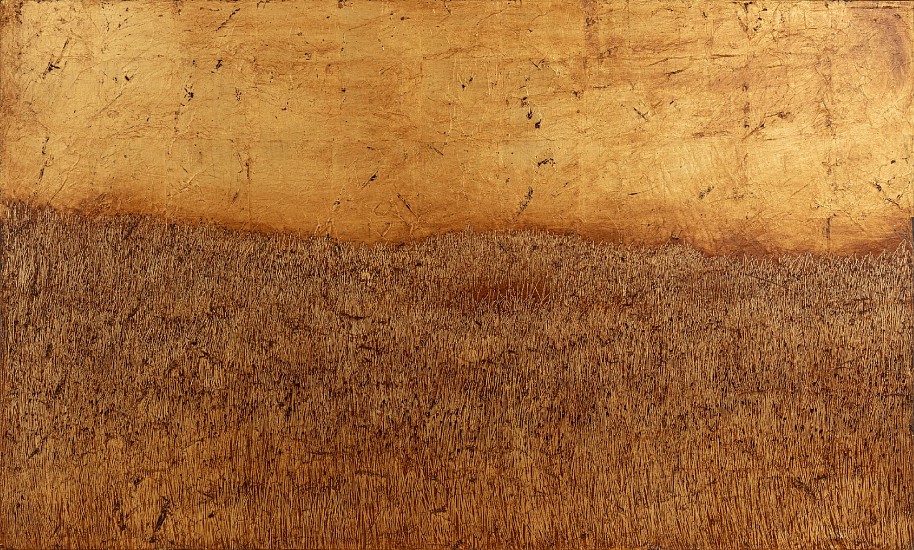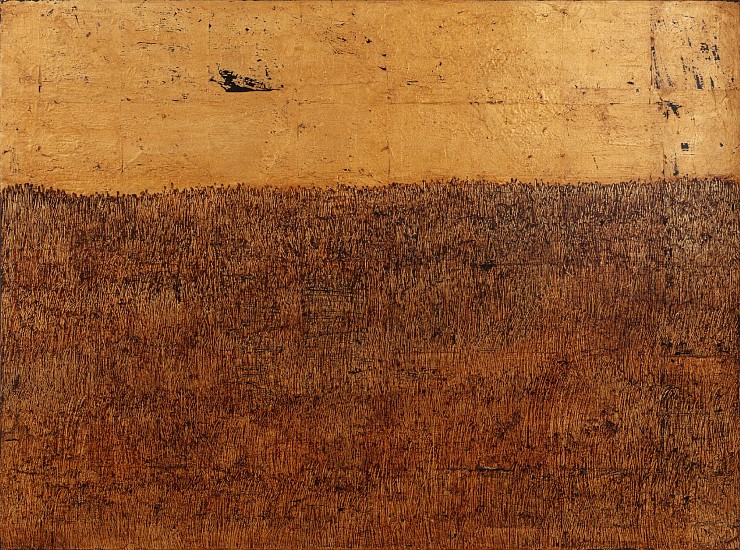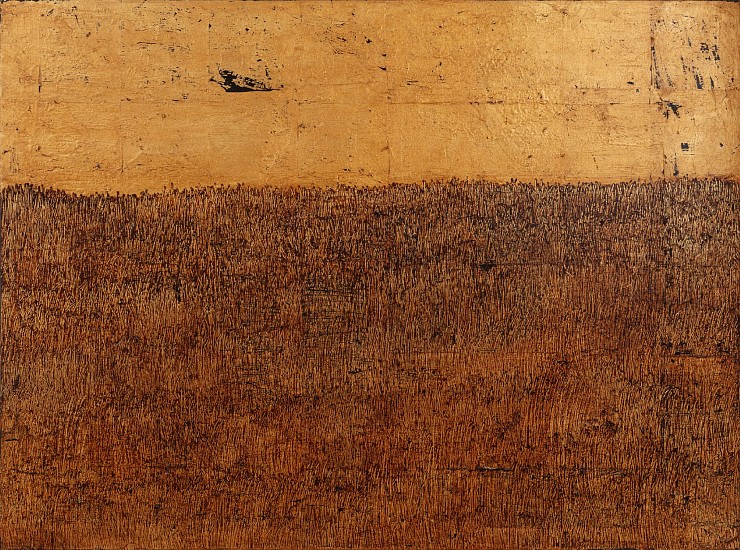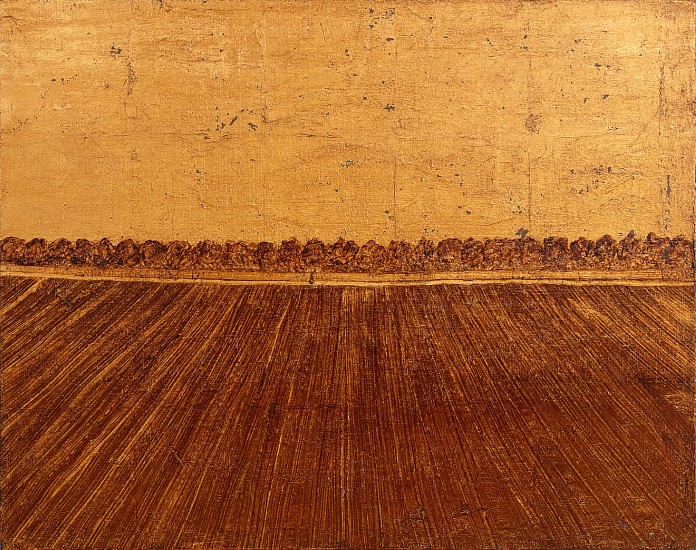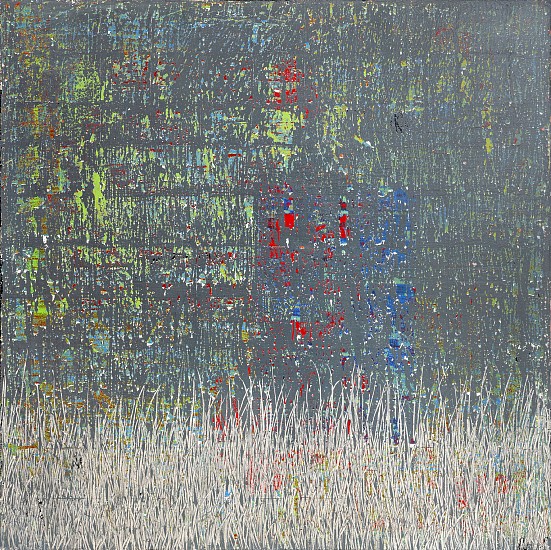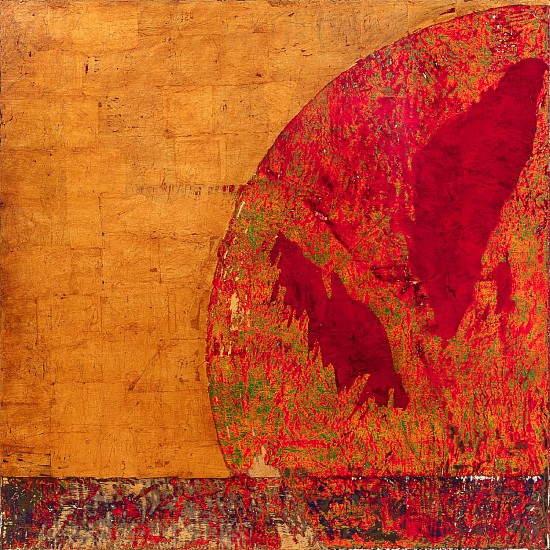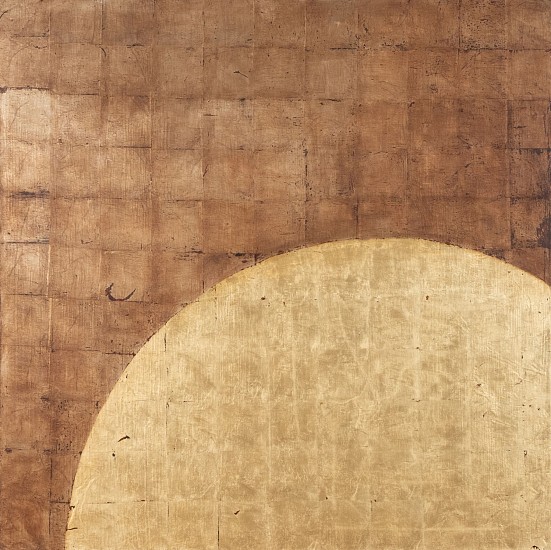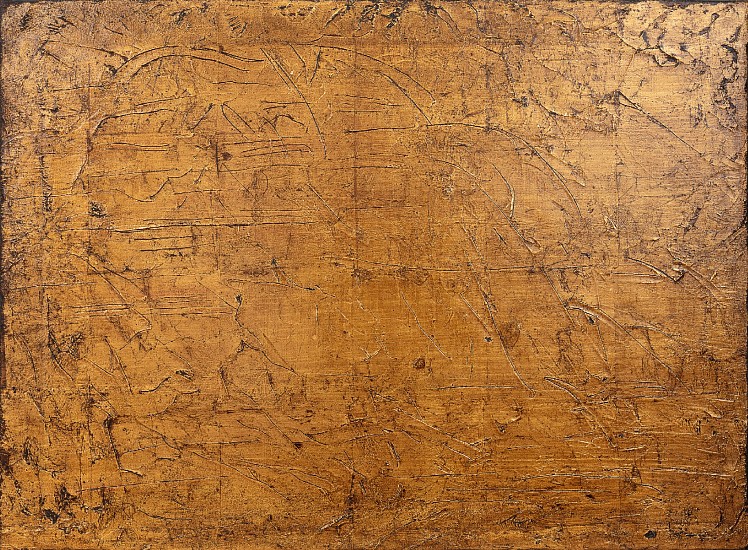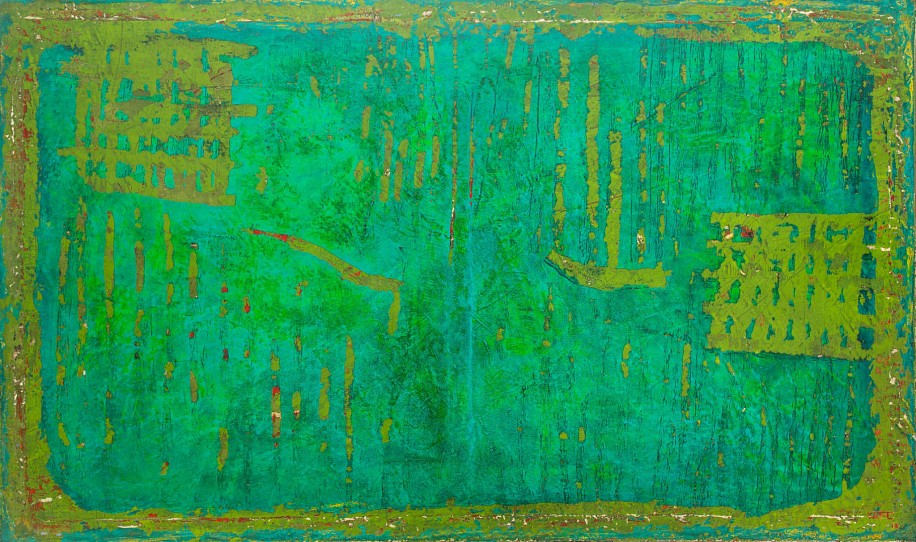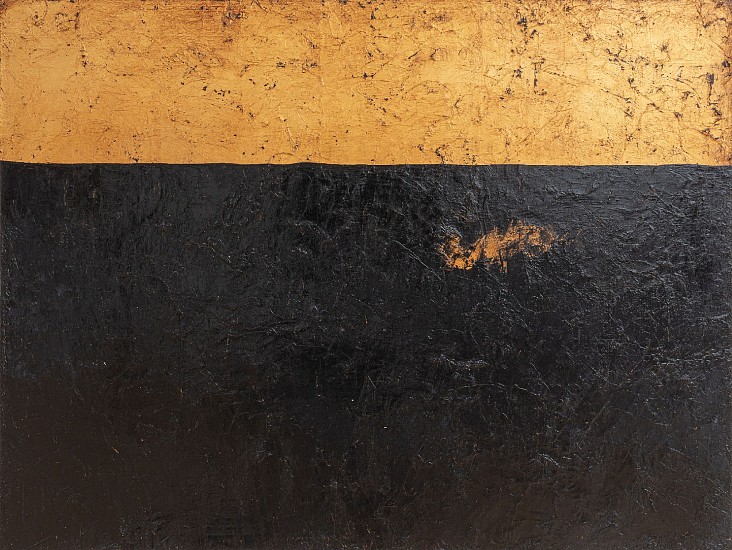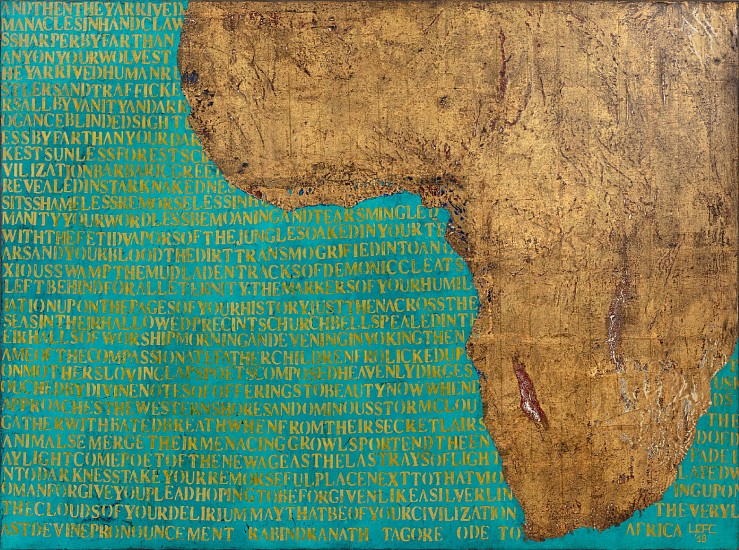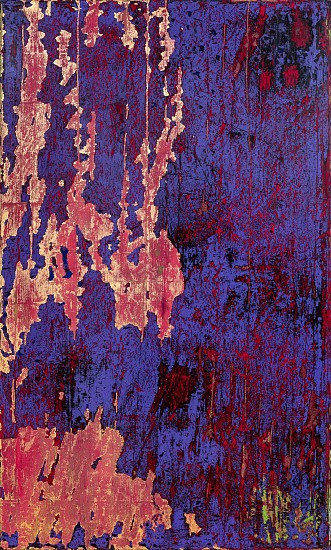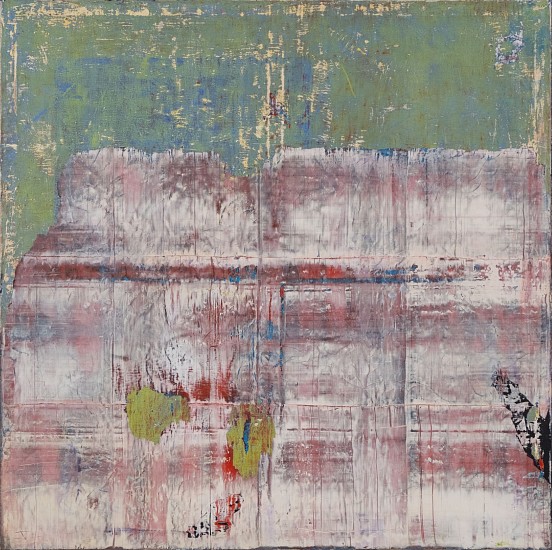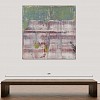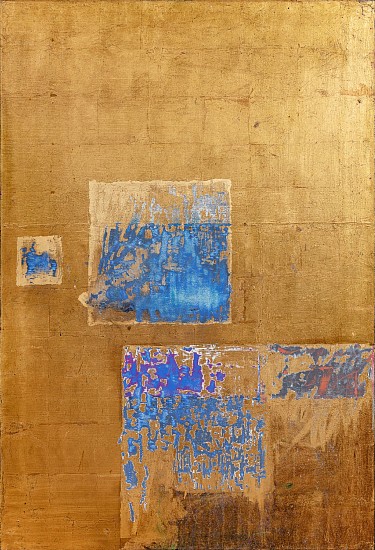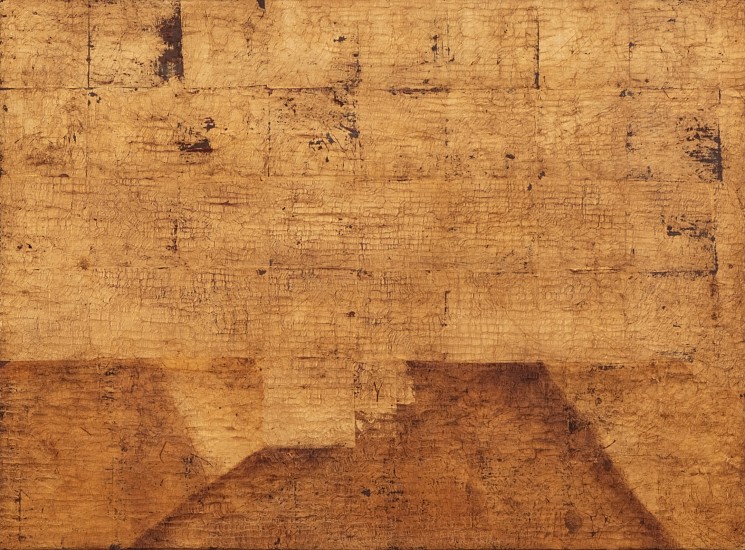PHILIPPE UZAC
‘Texture and patina are important elements in my work. But more essentially the laying bare of the past – looking for something like an unreachable truth – uncovering hidden layers of paint, is what drives me as an artist.
I reproduce the effects of time using all sort of tools such as knives and spatulas, but also chemicals and waxes, sandpaper and glue. It is a gruelling and a very physical exercise, constantly scratching, rubbing and sanding off layers of paint – each layer needing to dry and be “worked out” before the next one can be applied.
My work is abstract in essence, each piece being an object in itself. I work under the urge of bringing together interacting elements – a kind of vital incubation – producing eventually an epiphany of forms, textures and colours.’
– Philippe Uzac
Philippe Uzac’s shimmering abstract works take their name from the isiZulu word for Johannesburg, eGoli or “city of gold”. Texture and patina are important elements of Uzac’s work. “My paintings are pieces of decay inspired by the inner-city industrial fringes where my studio is located. Downtown Johannesburg is an area that has tentatively been recovered from deterioration. Some of its surroundings are still rusted, stained, faded or disjointed… forming interesting patterns with rich textures, colours and tones in which any attentive observer can find beauty.”
Contact: info@everardlondon.com
Philippe Uzac’s shimmering abstract works take their name from the isiZulu word for Johannesburg, eGoli or “city of gold”. Texture and patina are important elements of Uzac’s work. “My paintings are pieces of decay inspired by the inner-city industrial fringes where my studio is located. Downtown Johannesburg is an area that has tentatively been recovered from deterioration. Some of its surroundings are still rusted, stained, faded or disjointed… forming interesting patterns with rich textures, colours and tones in which any attentive observer can find beauty.”
Contact: info@everardlondon.com



























